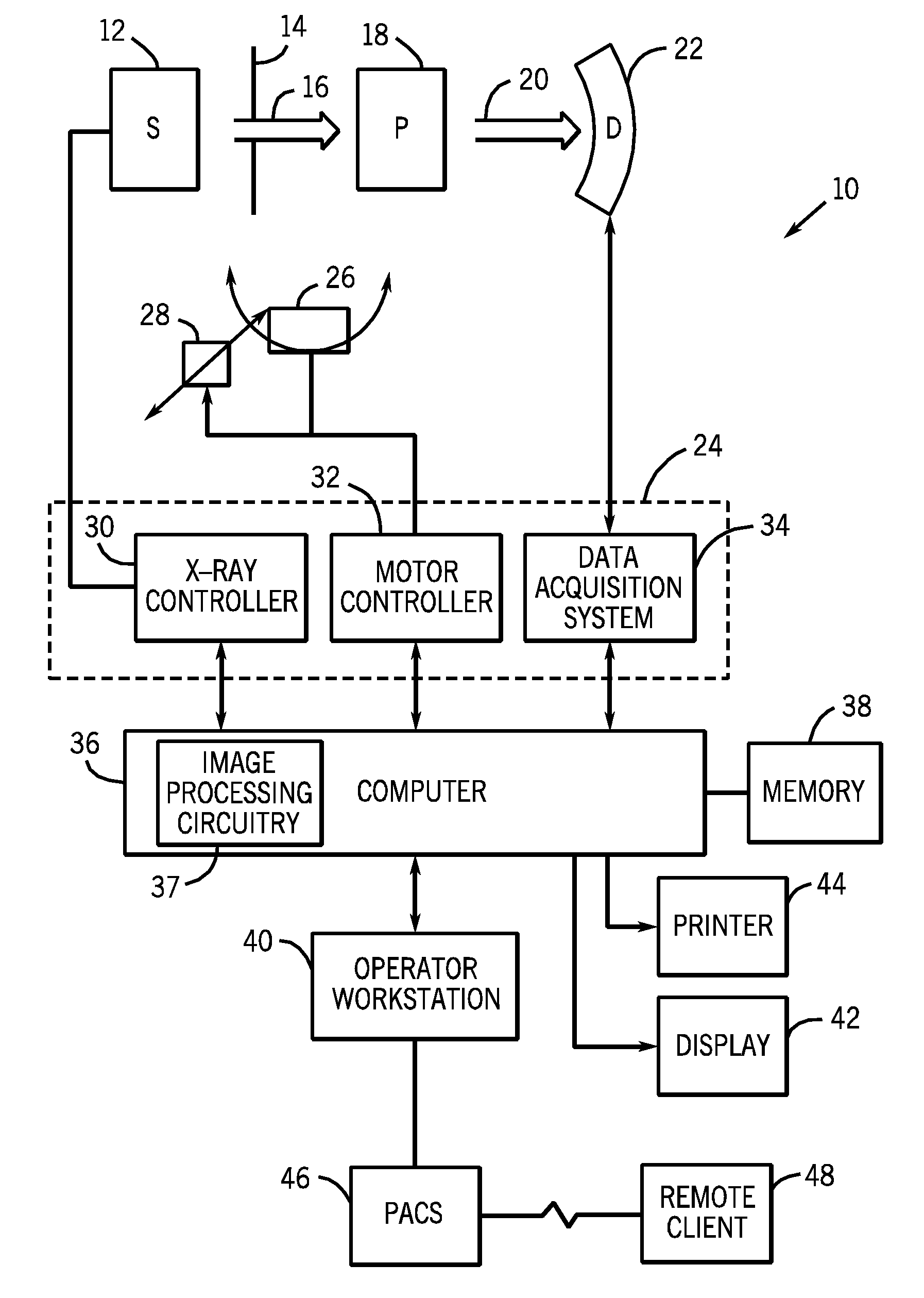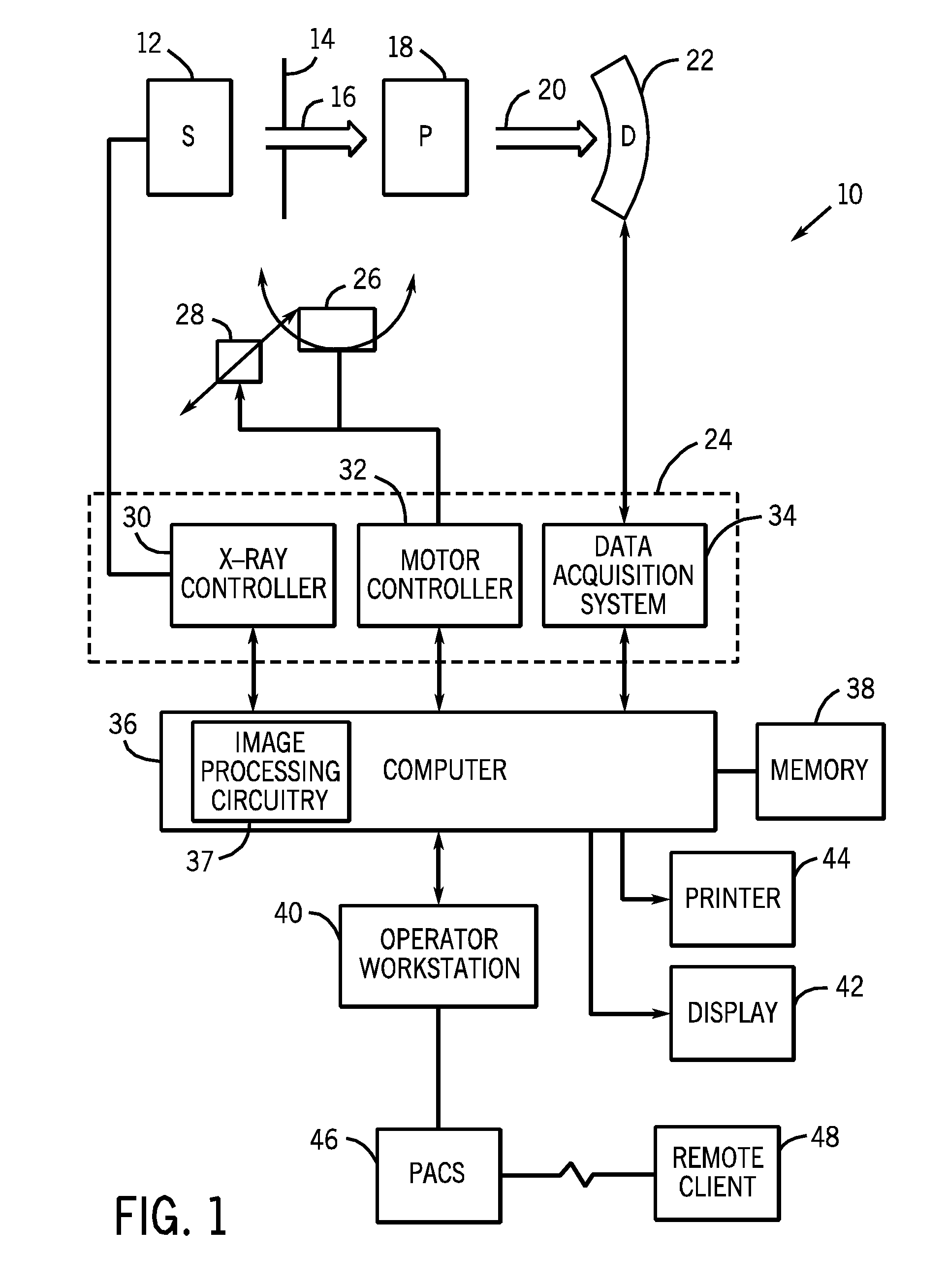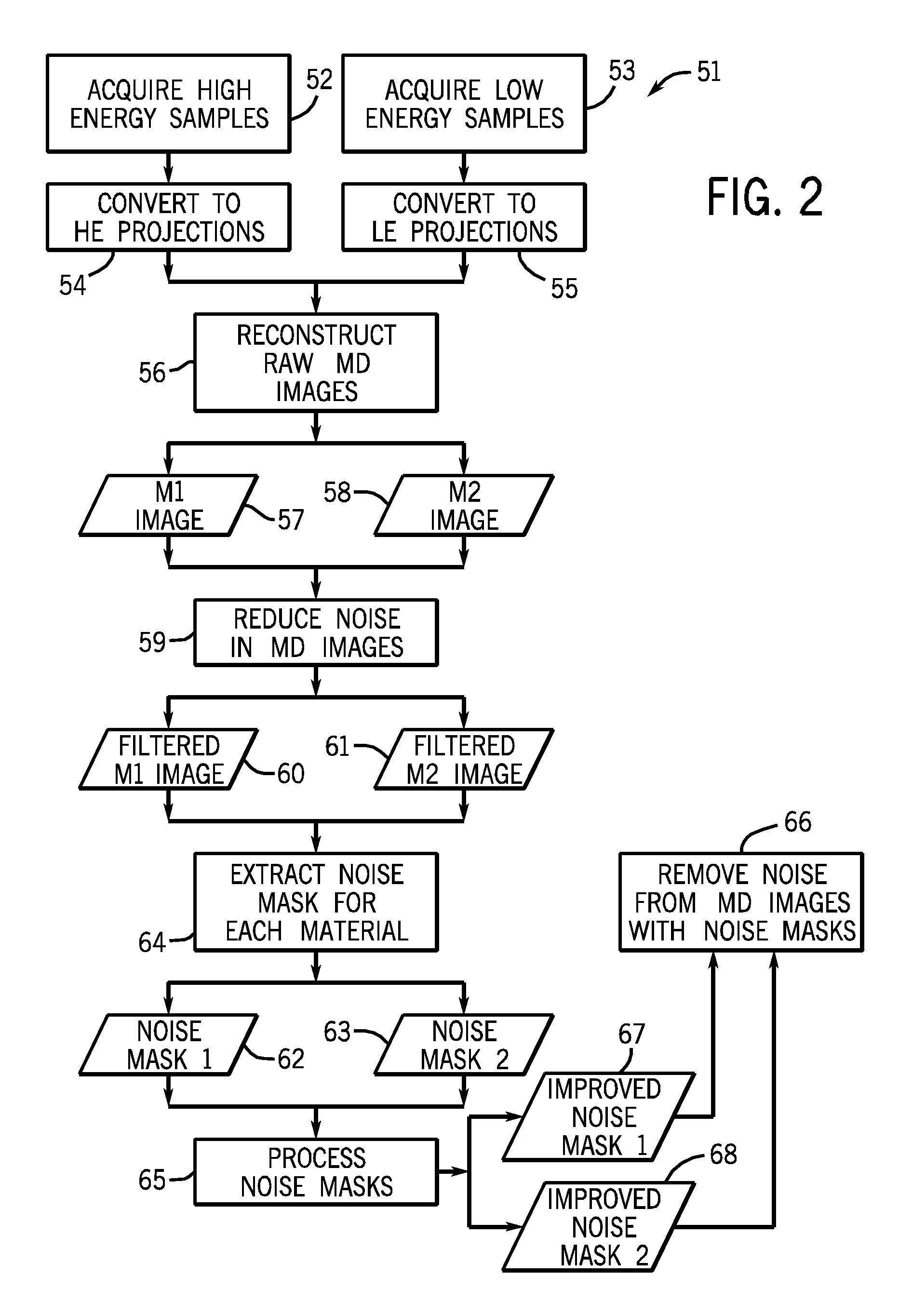Noise reduction method for dual-energy imaging
a dual-energy imaging and noise reduction technology, applied in the field of non-invasive imaging, can solve the problems of low signal to noise ratio (snr) than conventional computed tomography images, the signal in such images is often accompanied by undesired radiation dosage, and the techniques have fallen short of reducing noise to acceptable levels, so as to reduce noise, remove or reduce pixels
- Summary
- Abstract
- Description
- Claims
- Application Information
AI Technical Summary
Benefits of technology
Problems solved by technology
Method used
Image
Examples
Embodiment Construction
[0015]As described in detail below, embodiments of a dual-energy (DE) imaging system and techniques are provided for producing materially decomposed (MD) images that are substantially free of cross contamination, i.e., pixels corresponding to a first material being present in an image depicting a second material and vice versa. Accordingly, methods and devices are provided that may be used to reduce contaminating structural information from one or more noise masks. That is, information corresponding to non-noise sources, i.e., not noise, may be removed or reduced from the one or more noise masks such that the noise masks contain noise and not the desired signal (e.g. signal attributable to blood vessels, iodine, soft tissues, bones, etc.). In one embodiment, a correlated structure removal implementation exploits the negative correlation between noise contained in a first noise mask and noise contained in a second noise mask to eliminate structure contaminating pixels from the noise ...
PUM
 Login to View More
Login to View More Abstract
Description
Claims
Application Information
 Login to View More
Login to View More - R&D
- Intellectual Property
- Life Sciences
- Materials
- Tech Scout
- Unparalleled Data Quality
- Higher Quality Content
- 60% Fewer Hallucinations
Browse by: Latest US Patents, China's latest patents, Technical Efficacy Thesaurus, Application Domain, Technology Topic, Popular Technical Reports.
© 2025 PatSnap. All rights reserved.Legal|Privacy policy|Modern Slavery Act Transparency Statement|Sitemap|About US| Contact US: help@patsnap.com



